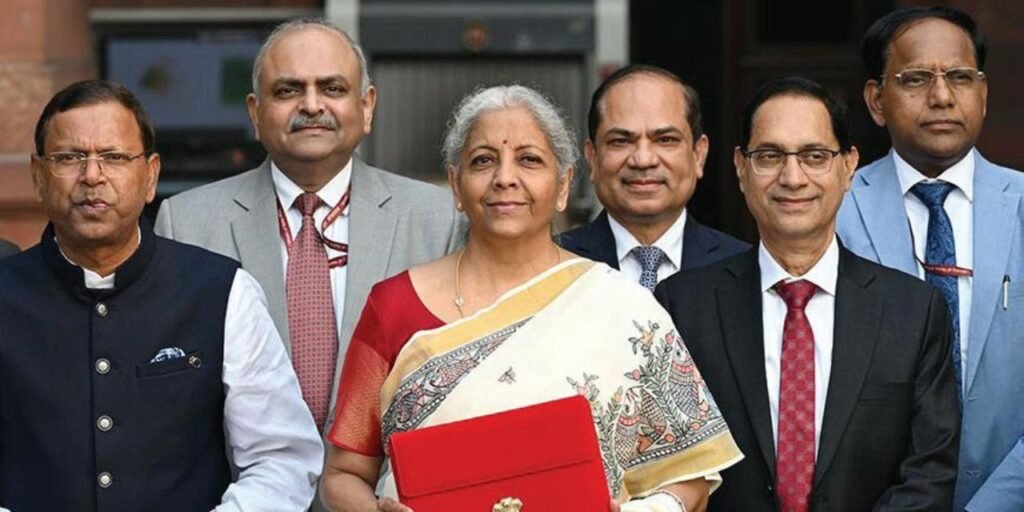
Finance Minister Nirmala Sitharaman‘s Union Budget 2025-26 delivers a multifaceted strategy aimed at revitalising India’s textile sector, a critical component of the nation’s economy and a major employment provider. Recognising textiles’ contribution of nearly 2.5% to GDP and its employment of over 45 million people, the budget outlines key initiatives designed to boost productivity, encourage modernisation, and enhance competitiveness in both domestic and global markets.

Addressing Cotton Productivity: A Mission Mode Approach
One of the budget’s signature initiatives for textiles is the ‘Mission for Cotton Productivity,’ a dedicated five-year plan focused on transforming cotton farming. India’s current reliance on imports, particularly of extra-long staple (ELS) cotton, creates cost pressures for domestic manufacturers. The mission directly addresses this by:
- Promoting ELS Cotton Cultivation: Identifying and supporting suitable agro-climatic zones for ELS cotton, reducing import dependence.
- Modern Farming Techniques: Introducing hybrid seed varieties and precision agriculture to maximise yields.
- Farmer Support: Providing targeted subsidies, comprehensive training programs, and access to essential, high-quality inputs.
This Mission, aligned with the government’s “5F” vision (Farm to Fibre to Factory to Fashion to Foreign), aims to secure a consistent supply of quality cotton, enhance the competitiveness of the textile sector, and increase farmer incomes, addressing a long-standing challenge within the industry.
Modernisation through Technology Upgradation: Shuttle-less Looms Get a Boost
Recognising the need for technological advancements, the budget introduces customs duty exemptions for specific categories of shuttle-less looms, reducing the financial burden on textile mills investing in modern machinery.
Customs Duty Exemptions:
| Type of Shuttle-less Loom | Status |
| Shuttle-less Rapier Looms (below 650 meters per minute) | Duty eliminated, reduced from the existing rate of 7.5% |
| Shuttle-less Air jet Looms (below 1000 meters per minute) | Duty eliminated, reduced from the existing rate of 7.5% |
By making these advanced looms more accessible, the government aims to drive efficiency improvements and boost fabric quality.
Safeguarding Domestic Manufacturers: Adjustments to Customs Duties on Knitted Fabrics
To protect domestic manufacturers from rising imports, the budget also makes strategic adjustments to customs duties. Specifically, the customs duty on knitted fabrics has been increased to 20% or Rs 115 per kg, whichever is higher. This measure aims to level the playing field, preventing the dumping of low-cost imports and supporting Indian textile mills.

Focus on Technical Textiles:
The government aims to boost Make in India in the technical textile sector includes the following:
- Agro textiles.
- Medical textiles
- Geotextiles.
Budgetary Support: A Strong Signal of Commitment
The Indian government has significantly increased the budget allocation for the Ministry of Textiles for the financial year 2025-26, underscoring its commitment to sector growth. The total budget allocation for the ministry has been raised from Rs 3342 crore in the revised 2024-25 budget to Rs 5272 crore in the 2025-26 budget.
This increase reflects a tangible investment in the sector’s future.
Supporting Handicrafts and Leather:

Customs duty on wet blue leather reduced from 10% to nil. To facilitate exports of handicrafts, the time period for export extended from six months to one year, further extendable by another three months.
Nine items including wool polish materials, Sea shell, Mother of Pearl (MOP), Cattle horn etc. added to the list of duty-free inputs.
Conclusion:
Through a combination of productivity-enhancing initiatives, technology upgrades, strategic trade measures, and increased budgetary support, the Union Budget 2025-26 signals a strong commitment to the Indian textile industry. These measures aim to drive growth, foster innovation, and enhance the sector’s competitiveness on a global stage, paving the way for a more robust and sustainable textile ecosystem. As 80% of India’s textile sector is driven by MSMEs, the budget thrust on export and enhanced credit will uplift the textile MSMEs. The budget also supports various aspects such as the National Manufacturing Mission and the Export Promotion Mission. These policies are projected to generate a conducive environment for the textile sector.
